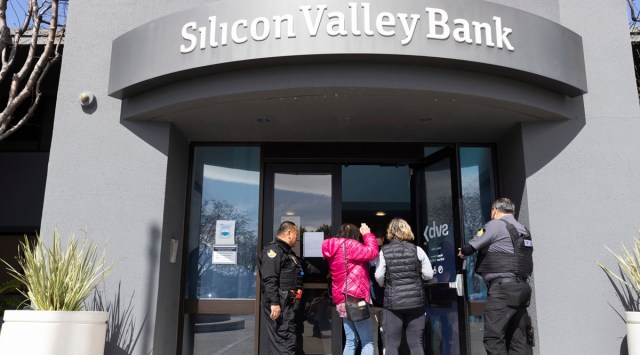
Written by Aditi Gupta
On March 10, Silicon Valley Bank (SVB) which was touted as the 16th largest bank in the US, was shut down by the Federal Deposit Insurance Corporation (FDIC). While for outsiders the move seemed sudden, trouble had been brewing for some time in the bank whose primary clientele included technology startups around the US, UK and Europe.
Without getting into specific and tedious details, the collapse of SVB can be characterised as a textbook case of a run on the bank. The modalities are simple — deposits by SVB swelled during the pandemic, while credit demand was still recuperating. The excess deposits were then parked in US treasuries to earn interest income. This was also the period of easy money and ultra-low rates, which saw many VC firms investing heavily in tech-driven startups. Much of the deposits of SVB were from these startups.
In 2022, the situation changed dramatically. To control inflation, the Fed commenced its most aggressive monetary policy tightening cycle. Consequently, interest rates rose sharply, thereby reducing the value of investments that SVB held as securities. Ideally, if the bank held the security to maturity, these losses would not be realised. However, as tech startups faced a liquidity squeeze, deposits saw a brisk withdrawal. This forced SVB to sell some of these securities at a loss. It incurred a $1.8 billion loss on the sale of these assets, which prompted the bank to announce the issuing of shares to strengthen its capital base. This was the beginning of the end for SVB. After the announcement, several VC firms advised companies in which they had invested to limit exposure to SVB. As outflows intensified, the regulator was forced to step in and close the bank.
With about $175 billion in deposits (as of December 2022), SVB is the largest US bank to fail since 2008. However, it accounts for only a small proportion of total US banking assets. Hence, there are limited risks of contagion. Furthermore, in the aftermath of the global financial crisis, capital requirements for banks underwent a significant change to absorb shocks such as these. So, the spillover to the entire banking system is highly unlikely.
As news of the collapse broke, banking stocks worldwide witnessed a sharp selloff, eroding not only banks’ capital but also substantial investor wealth. The Fed, Treasury and FDIC quickly swung into action to take remedial measures and calm market sentiments. Several measures were announced, essentially assuring depositors access to their funds and also providing banks access to additional emergency funding. In the UK, HSBC took over SVBs subsidiary for a notational £1.
In India, market volatility has risen impacting banking stocks the most. Several leading banks have been reassuring markets that their exposure to the SVB group is limited and insignificant.
An important reason for this crisis was its niche and concentrated clientele. SVB catered mostly to tech startups. This is not the case for other major global as well as Indian banks, which have a much more diversified customer base. This ensures that problems in one sector do not necessarily affect the others, minimising risks of a spillover.
Some Indian startups with exposure to SVB may face difficulty in funding day-to-day operations as their funds remain locked. FDIC will facilitate withdrawals, but it may take time.
Reports suggest that the RBI is also taking note of banks’ and other companies’ exposure to SVB to limit the risk of contagion. Nevertheless, the risk remains quite low as Indian banks are well-capitalised. RBI’s Financial Stability Report noted that even under a severe stress scenario, the capital adequacy ratio of banks is likely to remain within the mandated range.
In the last few days, a few other small US banks have met the same fate as SVB. It is hence unsurprising that there is a sense of nervousness in the markets, and increased volatility. With timely actions by the government and Fed, the risk of contagion has been greatly minimised.
Perhaps the most significant impact of the crisis will be apparent when the Fed meets next week. It will be interesting to see if this fiasco proves to be the chink in the Fed’s armour that forces it to slow down the pace of rate hikes going forward, or even push it to hit the pause button.
The writer is an economist at the Bank of Baroda